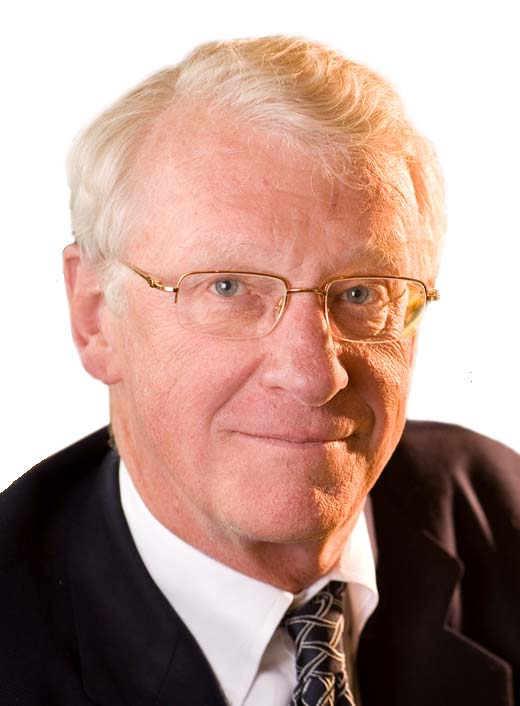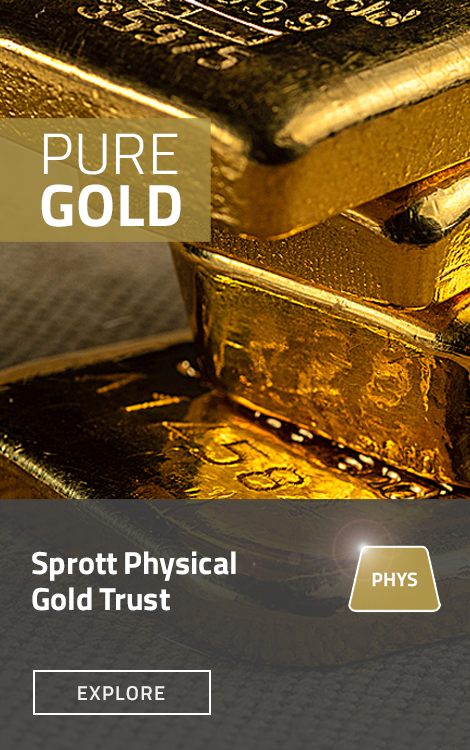If you have trouble viewing the webcast above, please try this: RIA Replay Link.
Download PDF of Slide Presentation
November 28, 2022 | (63 mins 42 secs)
2022 has been a difficult year for many asset classes. Markets were historically volatile, with higher-than-expected inflation, quickly rising interest rates, the Russia-Ukraine war and the threat of a global economic recession. While metals and mining investments shared in 2022’s volatility, we look ahead to brighter opportunities in 2023. In this webcast we discuss:
- Gold’s performance in 2022 and strong investment demand in the face of lower prices
- Silver’s critical role in technological innovation and its potential to rebound with inelastic supply
- The global energy transition to low-carbon and renewable energy sources—and what this could mean for investors
- Sprott’s new focus on “critical minerals” that are essential to the generation, transmission and storage of clean energy, including uranium, lithium, copper, nickel, silver, manganese, cobalt, graphite and rare earths
Webcast Transcript
Millissa Allen, RIA Database: Cover Slide
Ed Coyne: Slides 2-6, Introduction
Ed Coyne: Welcome, everyone, to our final webcast of 2022. As we look to what’s ahead for metals and miners, I've asked some special guests to join us today. Paul, let's start with what stood out for you in 2022 and what opportunities you see in 2023.
Paul Wong: Slides 7-11, Macro & Technical Overview
Paul Wong: In 2022, inflation rates rose much faster than we expected at the beginning of the year. The curve forecast about 75 basis points in rate increases for 2022, and here we are almost 400 basis points into the rate rise.
The two-year Treasury yield has now increased at the fastest clip since the early 1980s over 40 years ago. That has also taken the U.S. dollar higher as rates have diverged globally. The U.S. dollar is about 20% higher on a year-over-year basis. Typically, since the Plaza Accord of 1985, almost 40 years ago, a 20% year-over-year change tends to mark the momentum peak in the U.S. dollar.
Through it all, gold has maintained a relatively stable trading band. There are very active, noisy spikes, predominantly driven by flows from CTA or systematic hedge funds. But looking at the 50-week moving average, gold has been trading in a narrow band of around $60 over the past two years. On the panel below, I highlighted the CFTC non-commercial long traders. That’s the red line. It's sitting roughly at a negative two standard deviation if you drew a regression ban on the chart. Longs are essentially at the very low end and washed out. Conversely, the shorts at the beginning of this month were about the 95th percentile. Longs are gone, and shorts are very high. That produces a market prone to short covering, which we have seen in the last few weeks.
Essentially, we see now that the Fed has signaled that the rate hikes will likely slow, leading to momentum peaks in both yields and the U.S. dollar. As a result, we are seeing short covering across the board in virtually almost all risk assets, particularly for gold.
We’ve seen downward pressure on gold for most of 2022, as well as a higher dollar and higher yields, but that appears to have peaked. Depending, obviously on what happens in 2023, the market should start to reflect the rate hikes of 2022. The pace of rate hikes and the move in the U.S. dollar have also occurred simultaneously, which is unusual. I don't think the U.S. dollar and yields have lifted to this degree simultaneously in decades. I believe gold will start to retain its safe haven features. For the most part, the upward pressure from the higher U.S. dollar and rates is now over.
In the next chart, slide 11, I broke out gold demand into two very large buckets. The green line represents India, China and central banks, showing rolling 12-month gold purchases in metric tons. There is a wide gap between CFTCs and ETFs. This represents investment demand, which has outstripped investment. What you can’t see in the chart is that there has been very strong buying. Central bank buying in the last quarter has now tripled. The reason is that gold is outside the money banking system, and it's an asset without a corresponding liability.
In March, we wrote that we expected central bank buying to increase, and it does look like that has been playing out. This is important because central banks are massive buyers. Their reasons for buying gold are more strategic and national security-driven than anything else. At the current rate, it's about 1,600 tonnes, and it's a significant amount of buying. In 2023, we expect gold buying to resume on the retail investment side. However, looking at the overall supply picture, I think that there's going to be a very limited amount of gold available for investment funds.
Ed Coyne: Paul, the supply-demand matrix of gold going into the future looks pretty positive, particularly on that last chart with central banks purchasing. Stick around Paul, because we're going to open up the webcast for Q&A towards the end, and I know there'll be some questions specifically on the last chart. Thank you for that. I'd like to turn it over to John Hathaway now to dig into both gold and gold equities. John, it's certainly a pleasure to have you on, and thank you for joining our webcast today.
John Hathaway: Slides 12-17, Gold & Gold Mining Equities
John Hathaway: Thanks Ed, appreciate it. I'd like to start off with the subject that I think just won't go away, and that's dollar strength. That certainly has been the major headwind for gold this year. I think the reason for that is that the algorithmic robotic traders position a strong dollar by being long in dollars or the DXY and then shorting gold. They short gold without actually selling physical gold. They just write paper contracts that expose them to the short side of the gold price. I think they intentionally have pushed gold prices lower in terms of the U.S. dollar. As we saw earlier in the webcast, gold was only weak in dollar terms. In other currencies, it actually held its own quite well.
I believe the strong dollar theme has probably crested. One infallible way of seeing that is through magazine covers. We have one here from Business Week about the strong dollar. That's not the only one. There are several others. When a subject makes that kind of headline news, it's representative of an overcrowded trade. Also, the dollar has weakened quite a bit since that magazine cover, receding from DXY’s peak reading of around 114 basis points.
Let's move to the next slide, please. One reason that the dollar has been strong has been rising interest rates. The Fed is on a campaign to stamp out inflation, and time will tell whether they're successful in that. However, one thing we believe is that if they continue moving interest rates higher they're going to wreck the U.S. and the global economy. Annualized, the increase in interest on U.S. debt would add $300 billion to the US deficit, which is already running well over $1 trillion. Further increases in interest rates could be very destabilizing.
Let me digress for a second and say that while many investors think of gold as an inflation hedge, it really sometimes is and sometimes isn't. More importantly, gold is a strategic hedge against systemic risk. If interest rates were to continue to rise, I think you would see systemic risk in the form of a sovereign credit bubble defaulting. That might lead to a credit collapse, possibly a deflationary credit collapse, and potentially a lengthy recession that would last much longer than is generally accepted by the investment consensus. Bear in mind that the rise in the U.S. dollar is unsustainable. We've seen from a contrarian point of view reasons why it's probably at a turning point. Just looking at the math on rising interest rates, we can see that they could be very destabilizing for the U.S. fiscal position.
Let's move on to gold stocks. Ed mentioned earlier that the S&P 500 Index was down 14%. It's been down more than 20% recently, but if you look at the chart, slide 15, we're still in very overvalued territory. Should the Fed continue its interest rate hiking campaign, there is plenty of room for the stock market to suffer further. It could quite possibly decline more than the 20% low point it reached this year. I would add an overvalued stock market to the category of systemic risk. It is potentially a reason why the gold space could come back into favor. Now let's look at where gold stocks are on the next slide. We can see that valuations are at the low end of a very long time span, going back to 2006.
We've had a little bit of a bounce off the bottom. Still, when you look at this chart, gold stocks are cheap on a historical basis and also as a multiple of enterprise value to EBITDA. They represent not only relative value but also absolute value. It’s not on this chart, but gold stocks are actually less expensive than the S&P 500 and by quite a substantial amount.
Let's move to the last chart. Gold stocks and mining stocks are extremely inexpensive relative to bullion, too. They’re at long-term lows. Any sort of regression back toward that 35-year average would potentially generate substantial returns for gold stock investors. Why would this take place? Well for one thing a trend change in the gold price, which I think we've already started. Secondly, the relative valuation of gold stocks to the average S&P 500 stock is quite low. A change in either of these two factors could trigger a regression. Also, God forbid we have a resumption of the bull market trend in gold, which could take us well north of all-time highs in the $2,200 area. If that happened, I believe that there would be a scramble for generalist investors to move into gold mining stocks. I'll end it there and look forward to your questions.
Ed Coyne: Thank you, John. As many of our investors and many of our listeners on today's webcast know, Sprott is really the gold firm. Yet we also have substantial commitments to other metals, particularly silver. I thought now would be an appropriate time to turn to Maria to talk about silver. Maria thank you also for joining us today on our webcast.
Maria Smirnova: Slides 18-23, Silver
Maria Smirnova: Hi everyone, and thank you, Ed. Turning to the first slide here, I wanted to show how versatile silver is and what makes this metal so special to different industries. I will highlight some of silver’s characteristics that make it different and special. Number one, it's highly light reflective, which means it's ideal for uses like mirrors and anything like that. It's very electrically conductive. It has low electric resistance, which makes it very useful in electronics. As a result, silver is used in almost all electronics, including switches, circuit boards and connectors, as well as photovoltaics.
Silver is also used in vehicles. In other words, these two properties — being, very conductive to electricity conductive with low resistance to electric currents — make it so versatile that it's used in many different ways.
Finally, another important function of silver is to kill bacteria. It is antimicrobial. It's used in medicine, for instance in bandages in hospitals. Those are some of the reasons we think that silver's quite a unique metal, and that's why we've been very passionate about it.
Going to the next slide, I want to touch on two very important applications of silver. We have discussed these two before, but I wanted to highlight them again. Number one, and this is very well-known, silver is widely used in solar panels, and estimates vary, but about 120 million ounces of silver or about a tenth of the market goes into solar panels. We project that this number will increase very significantly going forward as the world goes green and decarbonization themes continue to take hold. Governments support solar installations even in mining. We speak to a lot of mining companies. Part of their efforts is to implement solar fields, a trend that will likely continue and intensify.
On the right side, this graph shows the penetration of electric vehicles versus ICE or internal combustion engine vehicles. You can see the orange, green and dark blue lines. These are hybrids and battery electric vehicles. Of course, the more electric vehicles we produce worldwide, the more silver we'll use because these vehicles have more complex electrical and electronic systems than ICE cars. We don't see this trend reversing, and in fact, will likely increase as car manufacturers add safety systems, entertainment systems, GPS systems, et cetera. You will use more silver wherever you have connectors, cameras or sensors. In addition, infrastructure like charging stations uses silver, which people install at home and in car parks. The use of silver is likely to continue growing there.
We think silver use will also grow faster than vehicle production, which is a very important point. When someone says to me well, there's a recession, and we're not going to sell as many cars, well, maybe but at the same time we will sell more EVs. Again, I don't see that trend reversing.
Let's now take a look at kind of the overall silver physical market. The Silver Institute in conjunction with the research organization Metals Focus just released an update to their estimates for silver supply and demand for 2022. The numbers are startling. Let's start with the supply, which is projected to grow 2% this year. Demand, however, is expected to jump 16% to 1.2 billion ounces. That leads to a multi-decade high deficit of 194 million ounces. Again, I will reiterate, that's a multi-decade-high deficit. Last year the deficit was about 48 million ounces. In the year before, it was actually in surplus, according to the estimates. That is very significant and I will also say that to me, the fact that supply is only projected to grow 2% is significant as well.
We haven't had a lot of new silver mine development, certainly not enough to offset the growing demand. In fact, back in April, the projection was for mine supply to grow by 2%. Now mine supply is expected to grow only 1%. The other 1% is coming from scrap of course, but again, that reinstates the point that mining continues to underdeliver. We are just not making enough of this stuff going forward.
Let’s look at the demand side again. To see 16% percent demand growth is very interesting to me. Demand for silver in jewelry is expected to grow 29%, in silverware 72% (Source: Silver Institute).
Turning to the next slide, let’s drill deeper into the demand side of things. We've seen a lot of strength in the silver market from India as you can see on the top left chart. Silver imports have skyrocketed this year. This is due both to restocking, as well as rising demand. The demand comes again from jewelry, from silverware and from investing. Coin and bar sales have been strong in India this year, and so that's not restocking.
On the right top, you’ll see a chart of overall bar and coin investment demand, which is jumping 18% this year to 329 million ounces. Again, you can see the trend here from about 2017. We've had year after year of growth in investment demand for bars and coins. Silver ETFs have displaced some of this demand, but still retail demand for bars and coins has been very strong.
This, of course, is leading to a decline in global stocks of silver. The bottom left chart shows inventories both in London and in the COMEX. We've had about 400 million ounces worth of drawdowns this year. That's a big number because stockpile levels are high. However, if you lose 400 million ounces of stockpiles, that's 40% of the market that's left the building this year alone, and the year is not even over yet. Those are very interesting numbers this year. I was certainly surprised by them, but they reinforce the points that we have been making about silver and the underlying trends in the physical silver market.
The price of silver has declined this year from about $22 to $20 or $21 dollars. It actually sold off more and then has been recovering recently. But the price of silver has not responded this year to the physical strength of the market. The reason for that is that in the paper market, the investors have turned negative on silver.
This decline has been driven by all the things we have discussed, the monetary tightening and the talk of rising interest rates. Silver positioning on the COMEX has been negative all year. It doesn't surprise me that it's affected the silver price negatively.
ETF holdings have declined by 120 million ounces this year. Now that means the market is in deficit, but not as big of a deficit if you don't count the ETFs.
As John discussed, the dollar now appears to have peaked. Paul mentioned how central banks are buying gold so that side of things has been strong. In silver, we're starting in a low place. Sentiment is negative. However, at the same time, physical demand is strong that any positive change to investor sentiment could cause silver prices to move. I truly believe that people love silver and it's very useful in various industries.
If we think that, going forward, the Fed won’t raise rates as fast or the Fed pauses, or the Fed has to reverse course, that may translate to strengthening gold and silver prices. Of course, silver can decline faster than gold, but it also increases faster than gold. It's more volatile than gold, so I think we are at a pretty good entry point for silver specifically. I don't think there's a lot of downside.
Ed Coyne: Well, thank you Maria and thank you for your comments unlike everyone else, all the guest speakers, please stick around for the Q&A session, which will be coming up after John Ciampaglia’s comments. As you discussed, silver has many modern uses in technology. As Sprott continues to look for additional real asset opportunities in metals such as uranium and energy minerals, I thought it would be interesting to have John Ciampaglia join us now. He’ll talk about uranium and energy transition minerals in general and what that means, not just for Sprott, but potentially for investors and how to be thinking about that. John, thank you for joining us on the webcast today.
John Ciampaglia: Slides 24-30, Uranium & Energy Transition Critical Minerals
John Ciampaglia: Thanks for having me, Ed, and thanks to everybody for making time out of your busy days. I'm going to talk about energy transition, and you might be asking yourself, well what does that mean energy transition? What's this term all about? To put it in very simple terms, it's really about shifting to lower less intensive carbon forms of energy. This could be related to energy generation, energy usage and electric mobility, which is obviously a very large part of our day-to-day lives. We can see this energy transition getting underway right now on a global basis, but we believe it will be a very long-term secular trend that will play out over many decades.
This is not going to be an overnight transition. Our existing energy infrastructure systems have been built over the last 125-odd years. You just cannot turn off something that has powered our lives and our economies for over a century and transition it to these new technologies and forms. However, we do think the transition is underway. It’s a little further ahead in places outside of North America that aren't as energy-rich in terms of natural resources.
The need for energy has been a catalyst to force some countries to be more progressive. However, I think the trend is starting to move around the world. From an investment perspective, this trend will require significant capital spending for infrastructure, new technology and development. I’m going to focus on three primary areas: electricity generation, electricity transmission and energy storage. Energy storage relates mostly to electric vehicles and large-scale grid storage.
This transition will be a long-term trend, requiring raw materials. On this slide, we've highlighted a number of different minerals that we think are going to be very important for this transition to cleaner energy generation, transmission and storage. Uranium is a key component for nuclear power generation. Silver is a key component for solar. Copper is obviously a very important mineral for transmission, cabling and wiring. When you get to energy storage, Lithium-ion batteries are very important, and the key components there outside of lithium are minerals such as nickel, cobalt, magnesium, graphite. All of these minerals have very interesting long-term stories behind them.
The world wants to decarbonize and move to lower forms of carbon emissions. At the same time, the world needs more and more electricity and other energy. In North America, we have very high standards of living. All of us are accustomed to having very high levels of energy in our lives. However, there are billions of people around the world that we describe as being energy impoverished. Most of these people would love to have lifestyles like our own and this is why we expect that over the next 20-odd years, electricity demand is expected to grow by 52% from 2020 levels.
As a result, we are not only trying to figure out how to decarbonize our grid, but we're also trying to figure out how to do that while achieving much higher levels of energy production. That's the big challenge, as well as the big opportunity that we see.
Let's talk about different forms of energy production. These are essentially all the ways you can generate electricity. You can have a nuclear power plant. You can have wind farms, solar, hydroelectric, biomass, which is essentially burning wood and other things. You can have a natural gas-fired power plant and a coal fire power plant. You could have an oil power plant, but there are very few of those left. On this slide, slide 27, we show how much CO2 is produced for an equivalent amount of energy via each of these methods. You can see that some forms of energy production, like nuclear, wind, solar and hydro, produce very little carbon.
On the other side of the spectrum, coal is clearly the highest CO2 emitter. The world is trying to move from higher carbon-emitting forms of energy production to less carbon-intensive ones, but the reality is coal is still the number one source of electricity production globally. Coal is very plentiful and cheap, and emerging markets and less well-off countries such as China and India and others are still very dependent on coal. There are also some other western countries that are dependent on coal. They've been looking at diversifying into lower greenhouse gas-emitting forms of energy. However, it's not just about CO2. It's also about reliability. That's where I think nuclear power plays a really important role in this energy mix.
If you think about how reliable each of these different forms of energy is, nuclear is the highest at 92%. That means that 92% of the time if you're running a nuclear power plant, it is generating electricity. In sharp contrast, if you look at hydroelectric, it's about 42% of the time, wind is 35% of the time, and solar is the lowest at 25% of the time. Low greenhouse gas emissions are important, but reliability is equally important.
While we've added tremendous amounts of renewable energy to our grids around the world, we have to make sure that we've got reliable backup, baseload energy production to address the intermittency related to weather-dependent forms of energy that I just outlined. Let's go to the next slide and talk a little bit more about where all the nuclear reactors are in the world today.
As you can see from this map, there are 434 reactors in operation today. There are 60 more under construction, and 96 more are planned. It’s fair to say that many countries in the west, including the United States over the last 10 years or so, have moved away from supporting nuclear energy. At the same time, governments around the world have been highly supportive of renewables. We’ve spent trillions of dollars adding different forms of renewable power to the grid. The key challenge, as I just mentioned, is their intermittency. It's important to have backup generation of different forms of power that can offset times when the wind is not blowing or the sun isn't shining. That really comes down to three choices. You can burn coal, you can burn gas, or you can have a nuclear power plant.
As governments around the world are trying to achieve different net-zero targets and commitments, they are also dealing with something we haven't had to think about for a very long time, which is energy security. Energy security is really important for a country, particularly if it is not energy rich. If you think about the energy crisis that Europe is going through as a result of the invasion of Ukraine by Russia and what that's done to the different energy markets there, energy security has become very top of mind. This is very similar to what happened in the 1970s when OPEC squeezed the price of oil and broke it out of its very long-term sub-market pricing structure. That was the catalyst that led to many of those nuclear power plants in the world being built in the 1970s and 1980s.
That was a direct response to the oil crisis. A similar situation is playing out as natural gas, coal and oil prices have spiked on the back of energy security concerns. Governments are starting to reconsider how they look at nuclear power as part of their overall energy mix. The Biden administration has been incredibly supportive of nuclear energy since it came to power, which is not characteristic of most Democratic administrations. If we go around the globe, I think we can identify numerous governments that have done energy U-turns as we like to call them, in terms of shifting policies back to help support nuclear energy to help offset some of these key issues around decarbonization energy security.
For example, South Korea recently had a new government come in place and announced it would not be phasing out its nuclear energy. Instead, they would be expanding it. Japan recently announced it would be restarting more of its nuclear power plants. In the United States, the most interesting case is in the state of California, which is trying to electrify everything. California was scheduled to close its last nuclear power plant down in 2025 but recently got a $1 billion funding commitment and an operating life extension out to 2030. There are a number of these cases around the world where governments are doing u-turns. All the build-outs and life extensions for existing power plants are obviously providing a huge boost to the sector.
On this slide, what we're showing you here is the uranium sector in two forms. One is the physical commodity itself. That's the uranium spot price, and you can see that over the last couple of years it has broken out of a long kind of range-bound price experience. You can see that the uranium stocks are much more volatile, as you would expect and they've been very volatile the last year or so.
Generally, when the price of the commodity is going up, the uranium stocks, because of their operating leverage and optionality, can produce greater returns. We probably talked to a couple of hundred different institutions in the last year around the world and family offices that are interested in this uranium thesis because they just see all the pieces of the puzzle come together after a very long period of poor returns in the sector.
Capital is starting to come back into the sector. We think that the sector is still in the very early stages of its recovery. The reason we say that is because if you look at the supply-demand fundamentals for uranium, which is the fuel that powers nuclear reactors, it's still very much out of whack.
I borrowed the next slide from a Cantor Fitzgerald uranium analyst named Mike Kozak, who's based in Toronto. This is his uranium production and demand-supply model over the next 20 odd years. He breaks down all of the uranium supply coming to market from primary mine supply. Those are producing mines, new mines under development and restarted idle capacity that was closed and put on care and maintenance.
Let’s look at new mines that are in the works. These are mines that are going to be constructed in the next 10 years or so. You can see that the top line are the reactor requirements and pounds per annum. The 434 odd reactors require about 180 million pounds of uranium each and every year for their fuel stock. Primary production is about 130 million pounds and next year it will probably go to 140 to 145 million pounds. This supply deficit can only be really solved by bringing more mines need online, and unfortunately, with the costs of everything going up there are much higher incentive prices required to build a new mine today than there were a few years ago.
The price of uranium today is around $50 dollars a pound. That's up from around $20 a pound about 16 months ago. The price is starting to move for sure. That’s enough of a price point to incent a company to restart an existing mine that's been in care and maintenance, but it's a far short of a price where you would actually build a new mine. We see this across many capital-intensive industries. The costs have gone up significantly. We think the cost or the price that you would need to see in uranium to incent development of any new greenfield project is somewhere between $75 and $100 dollars per pound. That belief has attracted a lot of capital back to the sector after a very long hiatus. And I think that provides a very interesting investment opportunity to consider and with that, I'll pass it back to Ed.
Ed Coyne: Thank you John and thank everyone on this group webcast for participating. Before we go into the Q&A session, I'd like to turn it back to Melissa to read off a few comments and then we'll open up the webcast for several questions.
Investment Risks and Important Disclosure
Relative to other sectors, precious metals and natural resources investments have higher headline risk and are more sensitive to changes in economic data, political or regulatory events, and underlying commodity price fluctuations. Risks related to extraction, storage and liquidity should also be considered.
Gold and precious metals are referred to with terms of art like "store of value," "safe haven" and "safe asset." These terms should not be construed to guarantee any form of investment safety. While “safe” assets like gold, Treasuries, money market funds and cash generally do not carry a high risk of loss relative to other asset classes, any asset may lose value, which may involve the complete loss of invested principal.
Past performance is no guarantee of future results. You cannot invest directly in an index. Investments, commentary and opinions are unique and may not be reflective of any other Sprott entity or affiliate. Forward-looking language should not be construed as predictive. While third-party sources are believed to be reliable, Sprott makes no guarantee as to their accuracy or timeliness. This information does not constitute an offer or solicitation and may not be relied upon or considered to be the rendering of tax, legal, accounting or professional advice.







